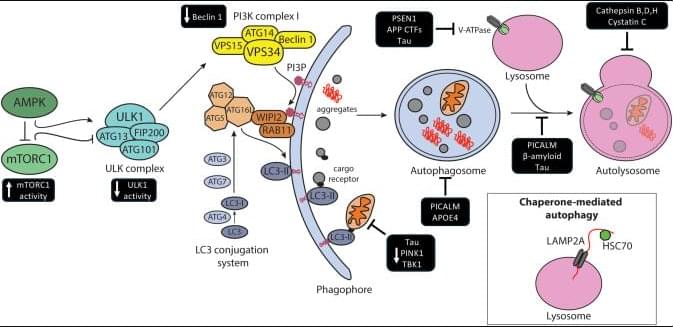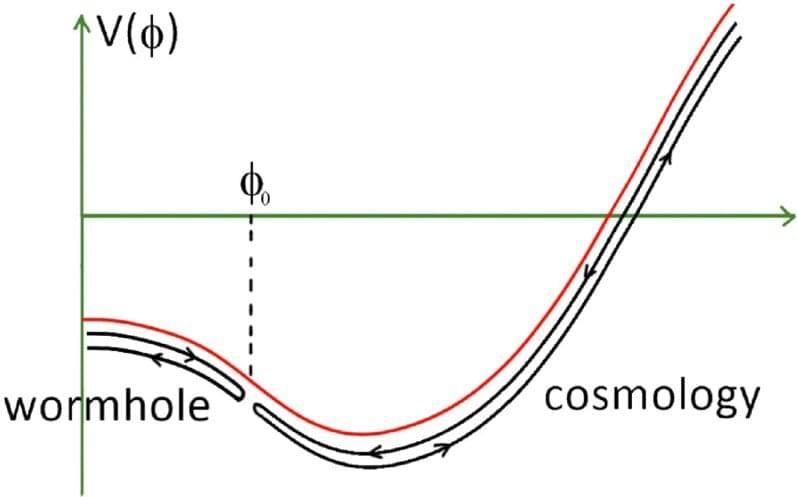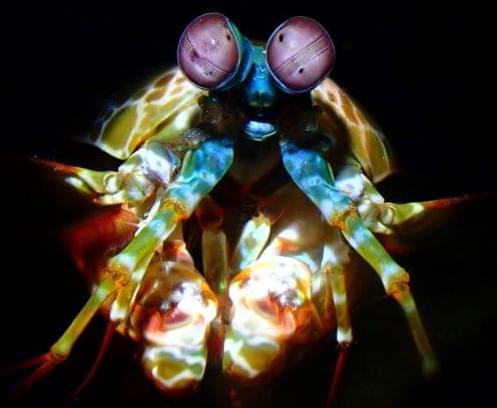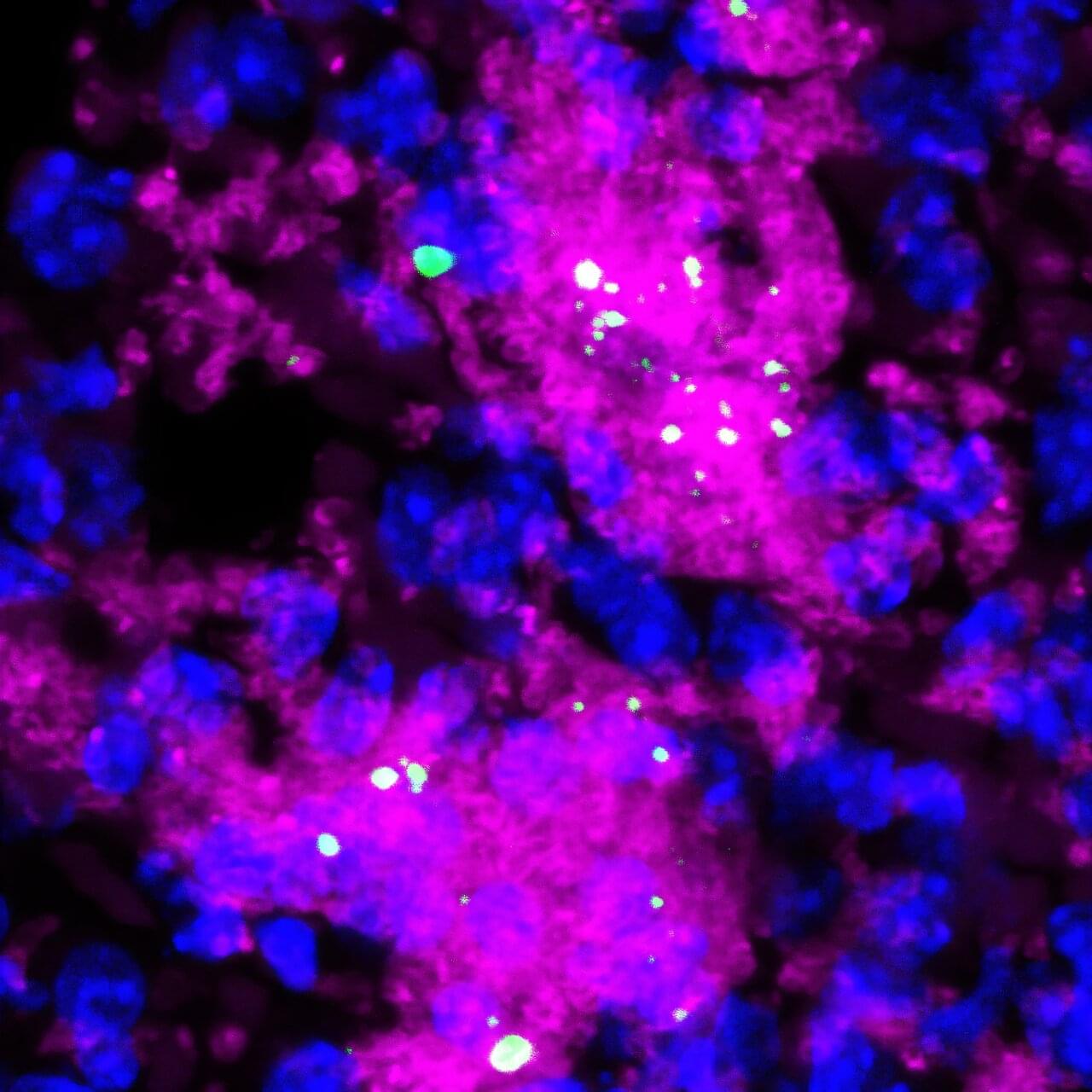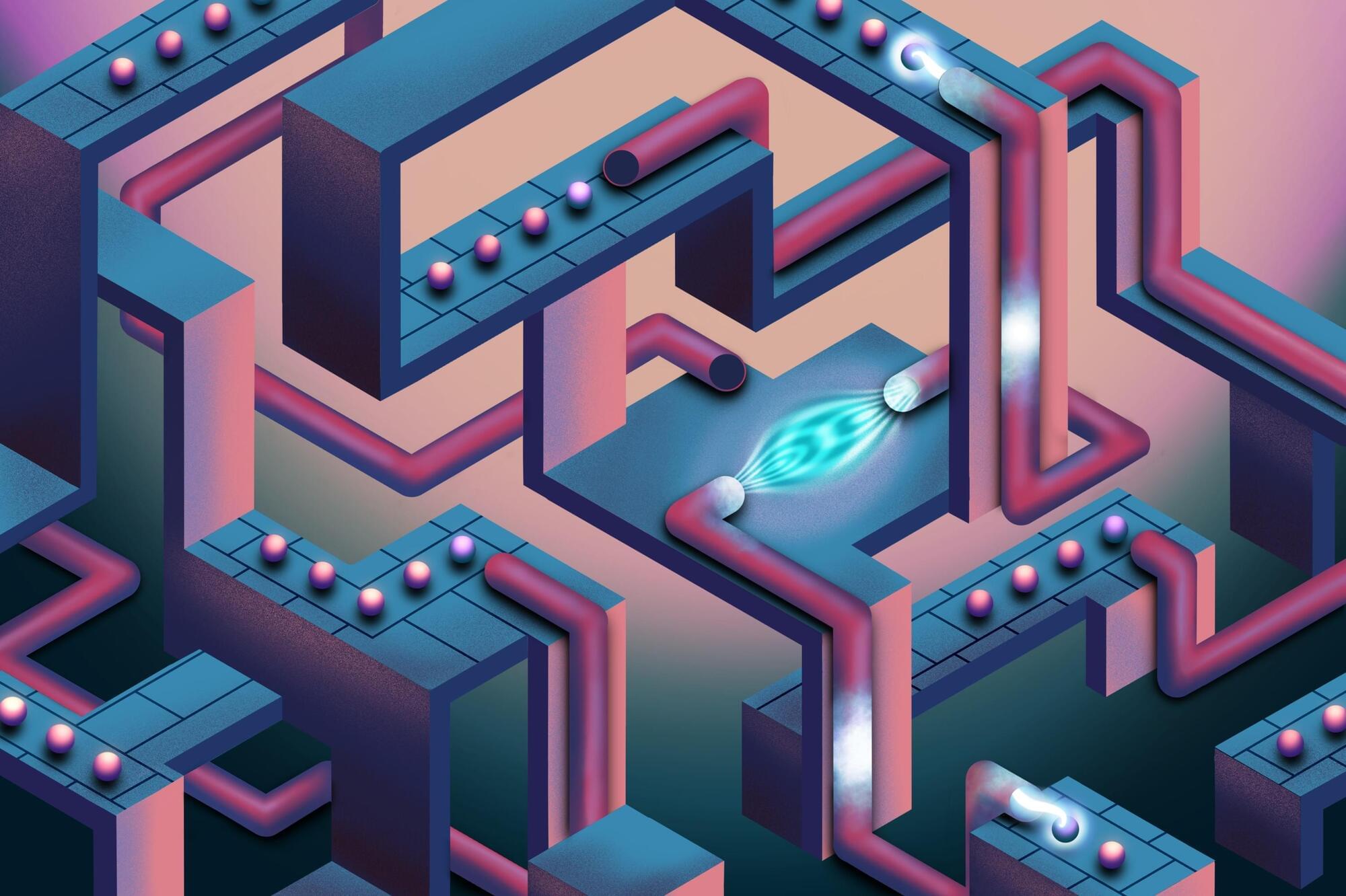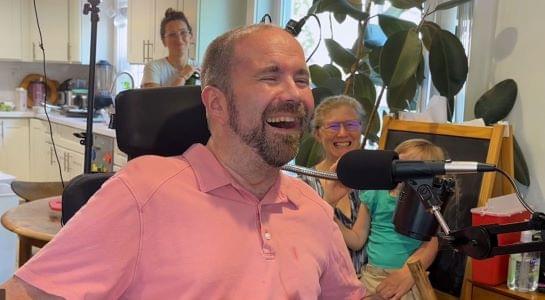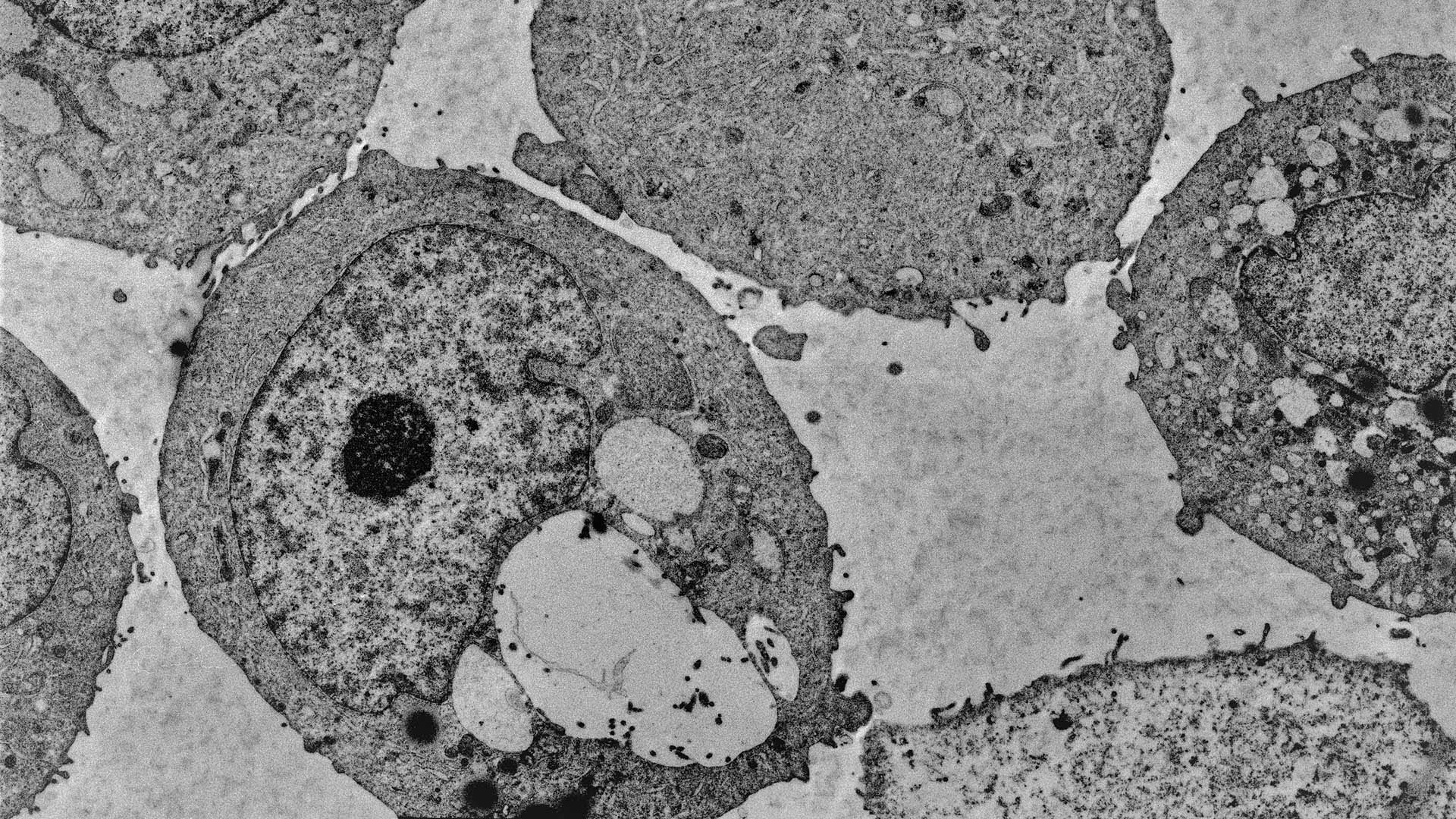This review discusses the links between the autophagy pathway, aging, and age-associated neurodegeneration in Alzheimer’s, Parkinson’s, motor neuron, and Huntington’s diseases. The authors highlight the functions of autophagy in neurons and glia and how aging and neurodegenerative diseases affect autophagy.
Theoretical physicists have long been trying to devise a complete theory of gravity that would also account for quantum mechanics phenomena, as existing models do not. Such a theory could collectively explain the many intricate physical and cosmological phenomena observed over the past decades.
Researchers at University of Maryland and University of British Columbia recently carried out a theoretical study exploring the possibility that holography, an approach to quantum gravity that includes some features of conventional holograms, could be used to describe quantum mechanical phenomena. Their paper, published in Physical Review Letters, introduces a theoretical argument that could suggests a link between observable cosmological phenomena and the physics that would underpin wormhole spacetimes.
“Coming up with a theory of gravity that includes the physics of quantum mechanics has been a major forefront area in theoretical physics for decades,” Mark Van Raamsdonk, one of the researchers who carried out the study, told Phys.org. “This is necessary to really understand the physics of black holes and the Big Bang, and to make progress towards a fully unified theory of physics.
Nothing else in the animal kingdom packs a punch like the mantis shrimp. This tiny, colorful crustacean delivers a wallop at 23 meters per second – a king-hit delivering a jaw-dropping 1,500 newtons of force to crack open the shells of their prey.
These blows are so powerful that scientists have wondered how the crustacean itself remains intact against the recoil effects.
Now, they’ve uncovered one of its secrets. The dactyl clubs that rain down mantis shrimp pain have a fascinating structure that filters out shocks, protecting the animal behind them.
Blood clots form in response to signals from the lungs of cancer patients—not from other organ sites, as previously thought—according to a preclinical study by Weill Cornell Medicine, Memorial Sloan Kettering Cancer Center and University of California San Diego Health. Clots are the second-leading cause of death among cancer patients with advanced disease or aggressive tumors.
While blood clots usually form to stop a wound from bleeding, cancer patients can form clots without injury, plugging up vessels and cutting off circulation to organs. The study, published in Cell, shows that tumors drive clot formation (thrombosis) by releasing chemokines, secreted proteins which then circulate to the lung. Once there, the chemokines prompt immune cells called macrophages to release small vesicles that attach to cell fragments (platelets), forming life-threatening clots.
The findings may lead to diagnostic tests to determine blood clotting risk and safer therapies that target the root of the problem to prevent blood clots.
From the Bronze age to the Industrial Revolution and beyond, the discovery and development of new materials has been a driving force in human history. These novel materials have helped advance technology and shape civilisations.
Today, we are at the beginning of a new era, where artificial intelligence (AI) seems to be in the perfect position to transform the search for useful materials. This looks set to completely change the approach to their investigation, creation and testing.
In ancient times, human civilisations experimented with natural resources to create tools and artifacts. The Bronze age, in the mid-4th millennium BC, was a significant milestone. Bronze, an alloy of copper and tin, led to the development of stronger tools and weapons, as well as advancements in agriculture and construction.
Medical breakthroughs could mean that more of us will live to be 100 or even more, according to longevity medicine expert Dr. Edouard Debonneuil co-founder of the London-based Longevity Clinic who says that modern technology, new medicine, additional medical breakthroughs, and healthy living could help more of us reach that mammoth milestone.
“If the current trend continues, we could see individuals living to 140 or 150 in good health. While that might sound sensational, it’s grounded in science and the longevity field is booming because of these breakthroughs,” said Dr. Debonneuil after a first-of-its-kind study, Rejuvenation Olympics, which produced promising anti-aging results.
“One of the guys taking part is in his 60’s but biologically he resembles someone in their later 30’s. Some participants halved their biological age within two to three years and have reduced their ageing rate by 40 percent. This is a significant leap in human history, we now have the tools to age slowly,” continued Debonneuil.
In a milestone that brings quantum computing tangibly closer to large-scale practical use, scientists at Oxford University’s Department of Physics have demonstrated the first instance of distributed quantum computing. Using a photonic network interface, they successfully linked two separate quantum processors to form a single, fully connected quantum computer, paving the way to tackling computational challenges previously out of reach. The results have been published in Nature.
UC Davis Health is pleased to announce that Neurosurgeon David Brandman and his team at UC Davis Neuroprosthetics Lab were selected for a 2025 Top Ten Clinical Research Achievement Award. The Clinical Research Forum presents this award to honor 10 outstanding clinical research studies published in peer-reviewed journals in the previous year. This year’s Top 10 Awards ceremony will be held on April 14 in Washington, D.C.
Brandman and his team are recognized for their groundbreaking work in developing a new brain-computer interface (BCI) that translates brain signals into speech with up to 97% accuracy — the most accurate system of its kind. Their work was published in the New England Journal of Medicine.
“Our team is very honored that our study was selected among the nation’s best published clinical research studies. Our work demonstrates the most accurate speech neuroprosthesis (device) ever reported,” said Brandman, co-director of the Neuroprosthetics Lab. He is an assistant professor in the UC Davis Department of Neurological Surgery.
This is probably a repost, but cool anyways.
CSHL Professor Lloyd Trotman and his team have discovered that menadione kills prostate cancer cells in mice by depleting a lipid known as PIP. Their findings set the stage for pilot studies in human prostate cancer patients and point to a potential treatment target for myotubular myopathy, a rare and fatal disease diagnosed in infant boys.
Prostate cancer is a quiet killer. In most men, it’s treatable. However, in some cases, it resists all known therapies and turns extremely deadly. A new discovery at Cold Spring Harbor Laboratory (CSHL) points to a potentially groundbreaking solution. CSHL Professor Lloyd Trotman’s lab has found that the pro-oxidant supplement menadione slows prostate cancer progression in mice. The supplement is a precursor to vitamin K, commonly found in leafy greens. The story begins more than two decades ago.
A professor at South Korea’s Ulsan National Institute of Science and Technology (UNIST) has developed BeeVi, an eco-friendly toilet that uses human waste to generate electricity to power a building.
The BeeVi toilet, developed by Professor Cho Jae-weon, is equipped with a vacuum pump that sends human waste into an underground tank.
